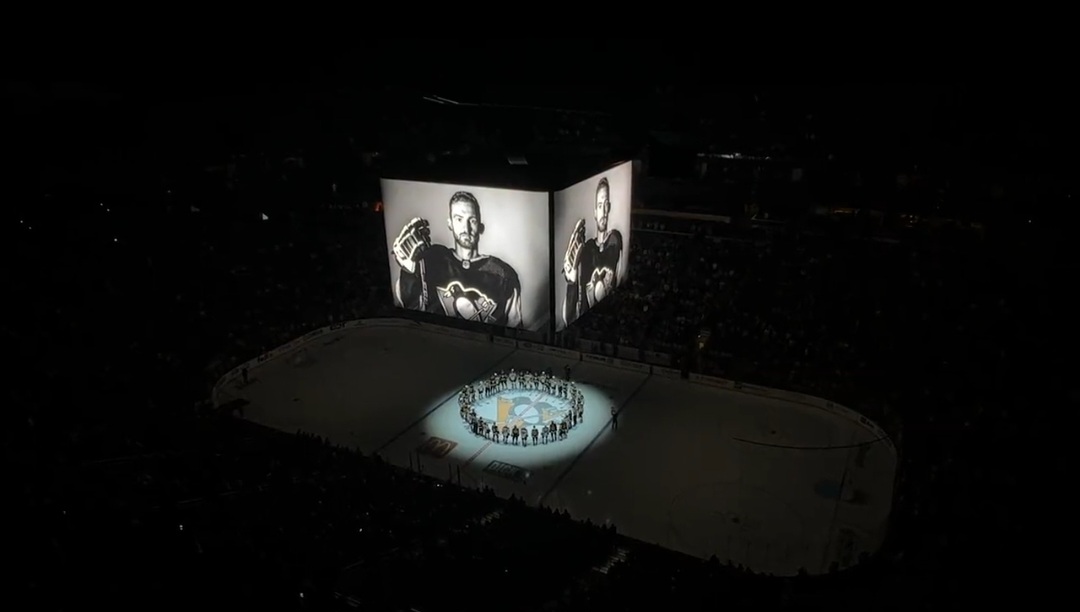The tragic death of Nottingham Panthers forward Adam Johnson has already heightened awareness and conversation regarding players and neck guards.
It shouldn’t take the death of a hockey player to spark the long-needed change surrounding the use of neck protectors at all levels of the game.
Johnson, the 29-year-old Minnesota native who played 13 NHL games with the Pittsburgh Penguins, was playing with the Nottingham Panthers of the U.K.’s Elite Ice Hockey League (EIHL) when he had his neck cut by a skate blade after a collision with Sheffield Steelers player Matt Petgrave during the second period. Although Johnson briefly got his pulse back in the ambulance, he later died at Sheffield’s Northern General Hospital due to massive blood loss.
The skate blade carries the greatest risk of catastrophic injury in ice hockey. It also introduces a unique danger that does not exist in other contact sports, like American football or rugby.
Although similar injuries on the ice are not common, it is also not the first time it has happened.
At the NHL level, Buffalo goaltender Clint Malarchuk’s neck was sliced open by a skate during a 1989 game, and in 2008, Richard Zednick, of the Florida Panthers, also suffered a similar life-threatening cut. Both survived but only some leagues saw an impact.
Some of those injuries triggered calls for hockey leagues like the Ontario Hockey League (OHL) and the Quebec Major Hockey League (QMJHL) to make neck guards mandatory for protection during games, to minimize the risk of being cut in 2010.
Since the death of Johnson, the WHL, and the Canadian Junior Hockey League (CJHL) mandated neck guards to be worn. The English Ice Hockey Association strongly recommends players at all levels use a neck guard or protector during all on-ice activities. As of Jan. 1, 2024, it will become mandatory in the league.
But these guards, whether cut-resistant socks and sleeves are not required by many other leagues, including the NHL, and they probably won’t be for a long time even though needed.
Cut-resistant socks and sleeves are gaining popularity and they are replacing pieces of equipment already worn by players. Neck guards can be seen as extra bulk that might slow a player down.
NHL star Connor McDavid McDavid isn’t calling for laceration protectors, whether it be the neck, wrists, or ankles, to become a league-wide mandate in the NHL just yet.
“Obviously, comfort is important,” McDavid said. “But it’s also comfortable to know that you’re protected. That can bring a big comfort to guys.
“I think it’s personal preference for everybody,” he said. “I see lots of guys have cut-proof stuff, I see some guys who don’t wear much at all. It’s all choice.”
For many longtime NHL fans, the lack of change may not be surprising because they know that change in hockey tends to be slow if it comes at all.
It took several decades for the league to mandate visors, but through education and gradual encouragement, players increasingly began to wear them voluntarily. The younger generation entering the game was already accustomed to wearing visors, which helped change the culture. Eventually, the NHL made visors mandatory for all players except for players grandfathered by the Collective Bargaining Agreement.
“It’s always tough to change,” player-turned-Philadelphia general manager Danny Briere said Wednesday. “Unfortunately, you’re always waiting for something tragic to happen for change to come. Hopefully, we don’t have to wait for another one.”
It is unlikely to bring immediate change to a sport stubbornly resistant to it but it needs to happen soon.
One should not hope that it happens again before changes are made. It’s time for the NHL to grow a backbone because mandating it is a matter of life and death.

